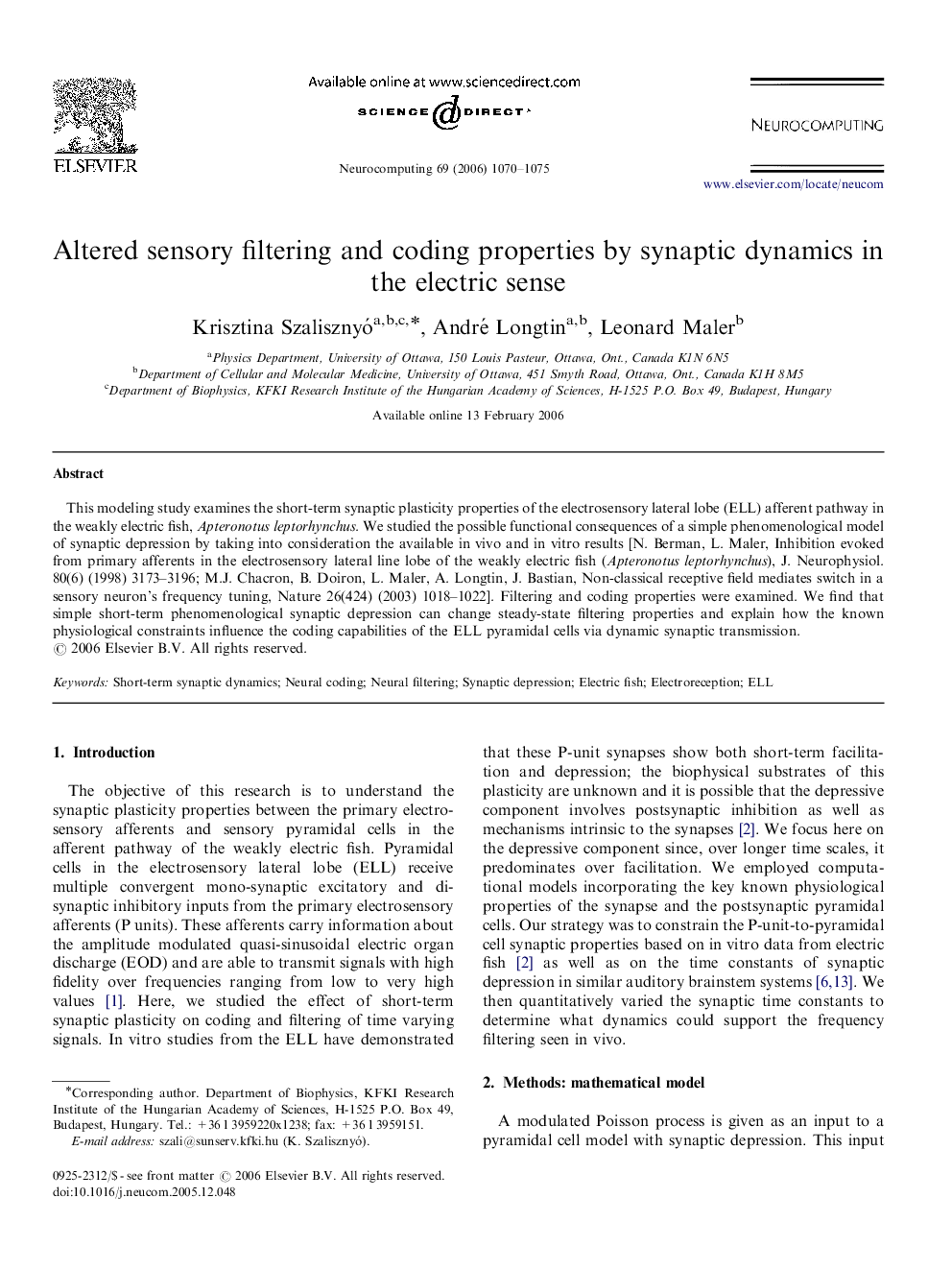| Article ID | Journal | Published Year | Pages | File Type |
|---|---|---|---|---|
| 408712 | Neurocomputing | 2006 | 6 Pages |
This modeling study examines the short-term synaptic plasticity properties of the electrosensory lateral lobe (ELL) afferent pathway in the weakly electric fish, Apteronotus leptorhynchus. We studied the possible functional consequences of a simple phenomenological model of synaptic depression by taking into consideration the available in vivo and in vitro results [N. Berman, L. Maler, Inhibition evoked from primary afferents in the electrosensory lateral line lobe of the weakly electric fish (Apteronotus leptorhynchus), J. Neurophysiol. 80(6) (1998) 3173–3196; M.J. Chacron, B. Doiron, L. Maler, A. Longtin, J. Bastian, Non-classical receptive field mediates switch in a sensory neuron's frequency tuning, Nature 26(424) (2003) 1018–1022]. Filtering and coding properties were examined. We find that simple short-term phenomenological synaptic depression can change steady-state filtering properties and explain how the known physiological constraints influence the coding capabilities of the ELL pyramidal cells via dynamic synaptic transmission.
